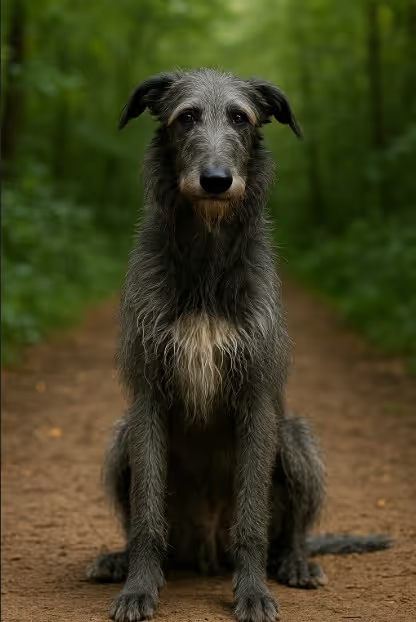The Scottish Deerhound is a majestic, gentle, and athletic sighthound bred for coursing red deer in the rugged Scottish Highlands. Known for their tall, wiry-coated elegance and calm, dignified temperament, Deerhounds combine the grace of a Greyhound with the rugged endurance needed for Scotland’s terrain. They make affectionate, loyal companions for experienced owners who can provide ample space, exercise, and love.

The Scottish Deerhound’s origins trace back centuries, likely descending from ancient sighthounds brought to Scotland by early Celts. Bred to hunt and bring down large red deer, these dogs were a prized possession of Scottish nobility. Deerhounds were so highly valued that ownership was once restricted to the aristocracy. Their population declined with the fall of the Scottish clan system and the reduced need for coursing deer, but dedicated breeders preserved the breed. Today, the Deerhound is cherished as both a graceful companion and a reminder of Scotland’s hunting heritage.
A very tall, elegant sighthound with a rough, wiry coat.
Moderate grooming requirements to keep coat healthy.
A high-energy sighthound that needs space to run.
Gentle and sensitive, responding best to positive methods.
A balanced diet supports their lean muscle and active lifestyle.
Generally healthy but prone to certain large-breed conditions.
Rare breed but available through preservation breeders and sighthound rescues.
Are Scottish Deerhounds good family dogs?
Yes, they are gentle and affectionate with family members.
Do they bark a lot?
No, they are generally quiet.
Do they shed much?
Moderately year-round.
Are they easy to train?
Yes, with gentle and consistent methods.
Do they get along with other pets?
Yes, with socialization; strong prey drive toward small animals is possible.
Are they hypoallergenic?
No.
How much exercise do they need?
At least 60–90 minutes daily, including running opportunities.